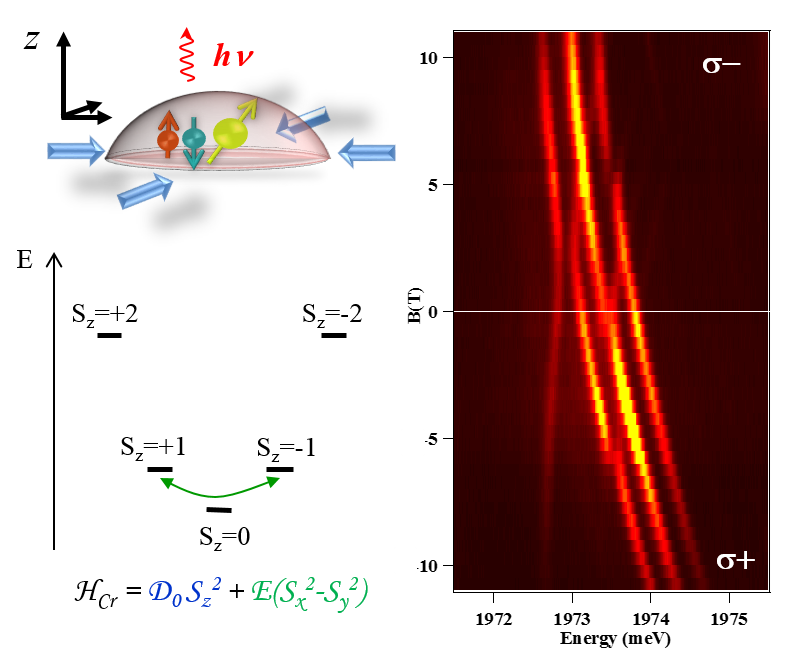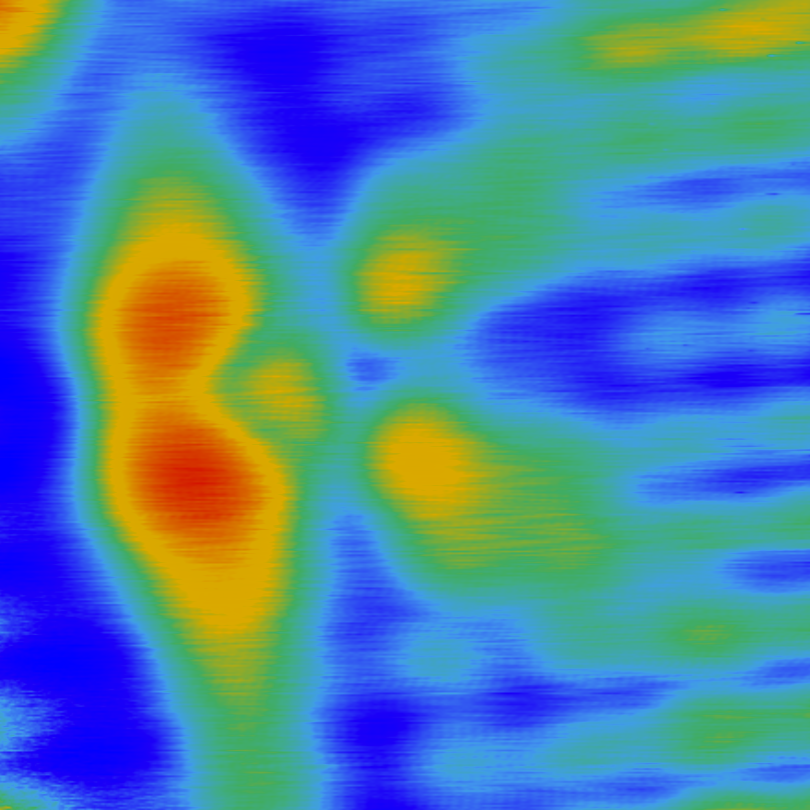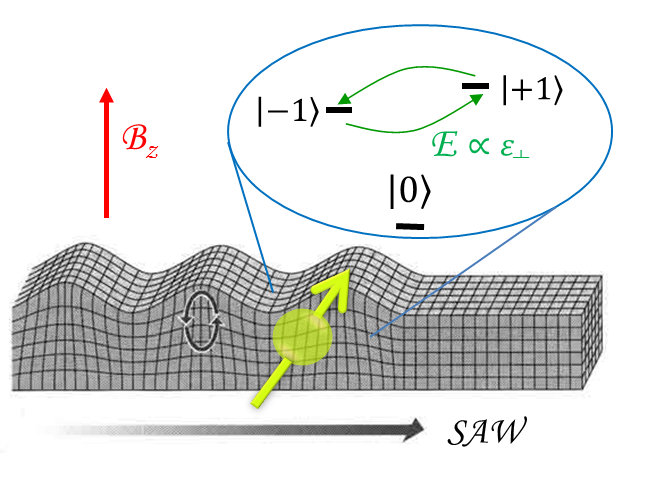Project overview:
Thanks to their long coherence time, individual localized spins in semiconductors are promising qubits for the implementation in the solid state of emerging quantum technologies including quantum computing and quantum enhanced sensing. However, achieving long-range interaction between remote solid state spin qubits and placing individual localized spins carried by dopants or defects at desired locations, essential elements of practical device fabrication, are still challenging goals today.
Phonon assisted spin-spin coupling in a mechanical resonator has been recently suggested as a promising route to mediate coherent interaction between localized remote spins. Surface Acoustic Waves (SAW), phonon-like excitations bound to the surface of a solid, are also proposed as efficient quantum bus enabling long-range coupling of a wide range of qubits. Developing such hybrid spin-mechanical systems will require arrays of identical spin qubits with large intrinsic spin to strain interaction.
At top: A strained QD containing a Cr atom and an exciton. At bottom: Energy levels of a Cr spin in a QD with biaxial strain.
The Cr fine structure is dominated by the magnetic anisotropy D0Sz2.
An applied anisotropic in-plane strain couples the spin states Sz=+1 and Sz=-1 through an additional term E(Sx2-Sy2).
At right: Magnetic field (Bz) dependence of the low temperature (T=5K) photoluminescence of a CdTe/ZnTe QD containing a Cr.
Only the three low energy Cr spin states Sz=0 and Sz=±1 are observed. 
Some magnetic atoms, as Chromium (Cr), incorporated in semiconductors can be strongly sensitive to lattice deformation. The spin of such individual magnetic atom can be probed optically when it is inserted in a quantum dot (QD). Individual magnetic atoms can also be manipulated and implanted with the tip of a Scanning Tunneling Microscopes (STM) to create artificial structures of few atoms on a surface.
STM wave function imaging (3nmx3nm) at T=4K of a single Cr atom incorporated by the STM tip in a Ga position on the first plane of the GaAs (110) surface. 
In the MechaSpin project, we will demonstrate the potential of using the spin of an individual Cr atom in a semiconductor QD as an optically addressable qubit for hybrid spin-mechanical systems. The large intrinsic spin to strain coupling of Cr will permit to exploit its interaction with the strain field of a SAW for a mechanical driving of the Cr spin. We will determine at the single atom level the efficiency of the dynamical spin to strain coupling and mechanically probe the coherence of this spin qubit. This ensemble of experiments will be the first demonstration of a full coherent mechanical control at the single spin level.
Schematic view of the spin structure of a single Cr atom under a longitudinal magnetic field experiencing biaxial strain and coupled to the strain field of
a propagating SAW. Dynamical in-plane lattice deformations induced by the SAW (ε⊥) coherently couple the Sz=+1 and Sz=-1 Cr spin states.
These states form the {+1,-1} Cr spin qubit. 
STM manipulation of individual atoms and STM-tip assisted substitution techniques will be explored to create arrays of Cr spins on a semiconductor. Experimental results obtained for Cr substitution on III-V and II-VI compounds, materials where substitutional Cr have different electrostatic properties, will be compared with ab initio modelling. This will shed a new light on this promising but underexplored technique. STM spectroscopy combined with ab initio modelling will be used to analyze the effect of local environment on the electronic and magnetic properties of individual Cr atoms.
Project organization:
The scientific part of the project is organized around four work packages (WPs). They cover the Molecular Beam Epitaxy (MBE) growth of Cr-doped nano-structures (WP1), the STM probing and manipulation of individual Cr atoms (WP2), the mechanical driving of an individual Cr spin (WP3) and the modelling of STM tip-assisted implantation of Cr and of Cr STM spectra (WP4).